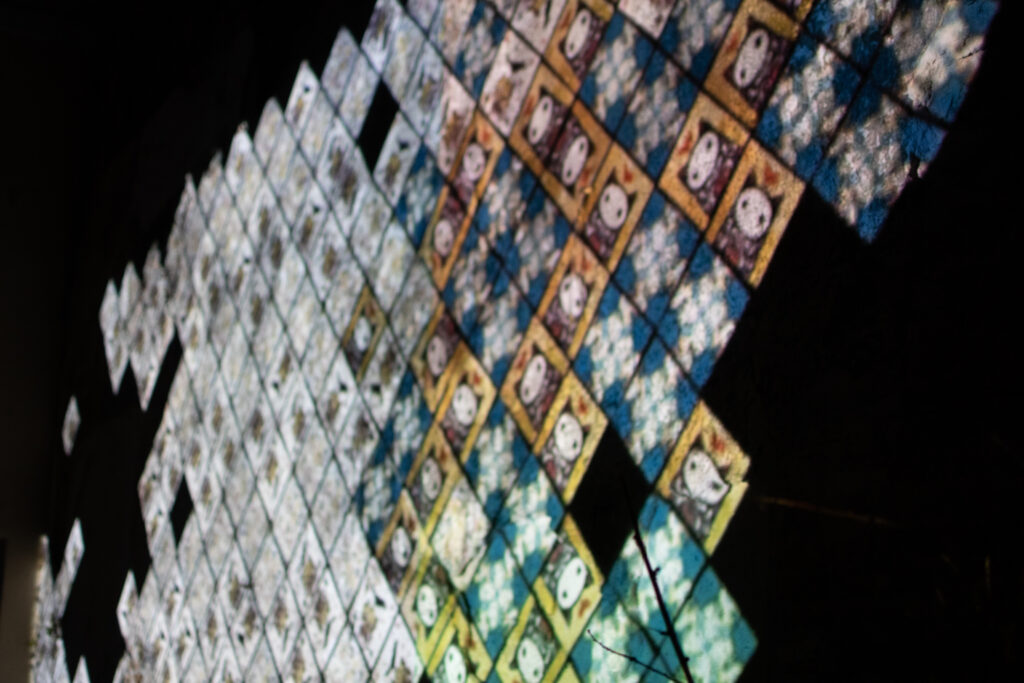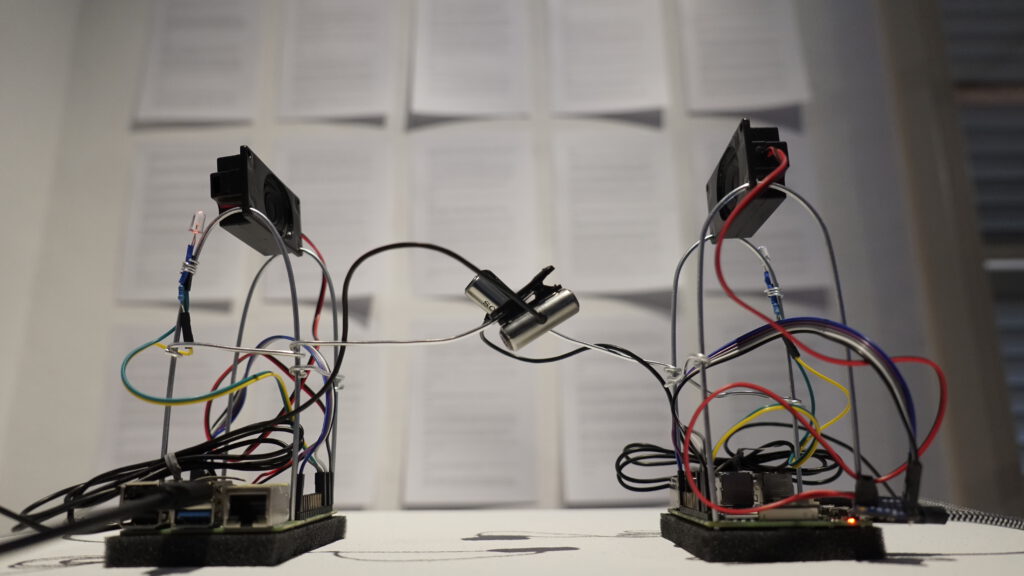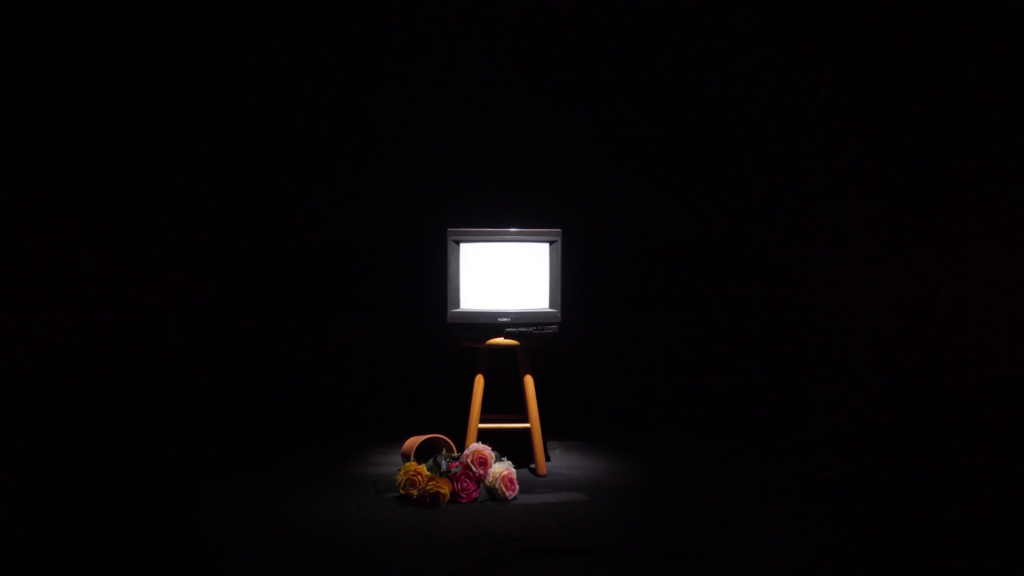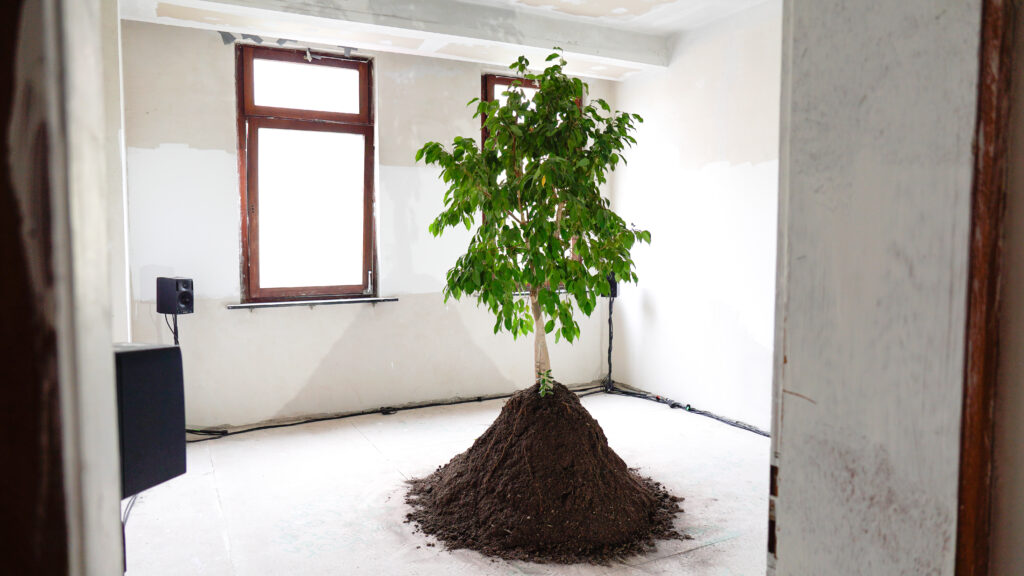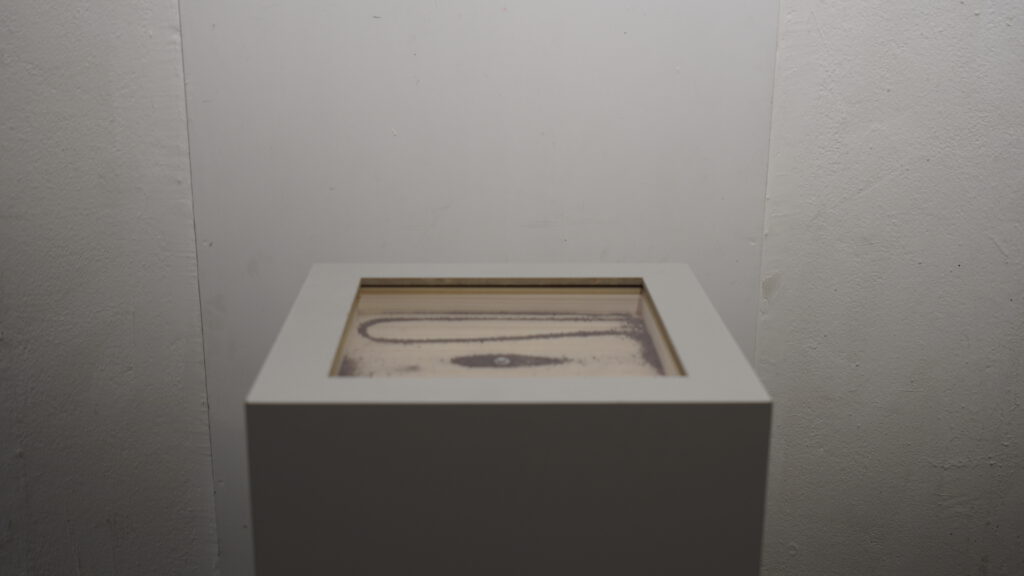Talavera de Luz is a collaborative art project initiated by Leon Eckard and Dr. Miguel Ángel Pérez Cuautle. It combines traditional Talavera ceramic patterns with digital technology. In workshops with local artists, students, and community members, new tile designs were created and turned into animated projections. These designs were then displayed on historical facade of the community center CEBIS in Puebla, bringing forgotten architecture back into the spotlight and connecting tradition with modern creativity.
Each speaker generates audio signals while simultaneously listening to its acoustic environment via a microphone. Inspired by the decentralized synchronization patterns of fireflies, the speakers respond rhythmically to one another, creating an emergent feedback system. Each speaker selects from a specific range of notes, resulting in harmonic structures that evolve through rhythmic interplay, creating a dynamic musical composition.
Der Mond (The Moon) is a self-modulating installation, instrument, and performance, constructed from materials abandoned by our society. A fragile self-regulating system consisting of four brass strings, tensioned over a found metal plate, is tuned to the resonance frequencies of the plate. The piece invites reflection on the mechanisms of cycles, the relationship between humans and machines, and the aesthetics of decay. It challenges the perception of stability by showing that even in apparent decay, new order and continuous transformation are at play.
The work „What Is It (not) Like to Be a Bat?” is a reference to the famous paper „What It Like to Be a Bat” (1974) by the American philosopher Thomas Nagel. The work consists of a self-built headset, which uses three ultrasonic sensors, a gyroscope and a Bela Mini. The data corresponding to the respective room is translated into a musical „Bat-Theme”.
Der Bewusstseinsautomat – ein Dialog zwischen Maschinen (the Consciousness Automaton –
A Dialogue between Machines) is an interactive installation that consists of two Raspberry Pi
computers placed on a white socket. The sculpturelike computers are displayed to the audience, with
all technical parts, including the microphones, speakers and wires visibly laid out. The two computers engage in an open generative conversation about the implications of their
existence and their thoughts on media as an extension of the self, as well as the meaning of
authorship in a world where artificial intelligence is becoming increasingly prevalent.
What is light, what is sound? Where are the boarders of our perception and do our senses really represent reality?
In the video installation „Mise En Abyme“ the medium becomes the object and represents itself. In an endless recursive loop, the video decomposes into its individual parts, which in turn are the whole video. If we want to look beyond our perception, we can see how the world around us consists of smaller parts. But we cannot exit our subjective view into an objective reality and therefore, we will eventually end up again in our limited representations of reality.
‚Invisible Habitats‘ is an interactive sound installation dealing with the transformation of our (sonic) environment. The Ficus Benjamina, a tree originated in the tropical and subtropical zone of east Asia is nowadays more known for his use as a decorative plant is placed uprooted in an old apartment. Today’s urban environment is strongly human made and urban noise is one of the biggest health issues in European cities. This transformation of environment takes place gradually and silently. The line between natural and artificial surroundings blurs, while we are creating a new habitat for ourselves. Sometimes it is important to slow down and listen instead of move, in order to recalibrate.
Initiated by the artist Yoana Tuzharova, the exhibition „Metamorphosen – Topology of the Capital“ deals with the influence of economy on urban structures and its development. The project consists of several works. One of them is a pedestal with a plate with coal dust on top. This plates is brought into vibration by a composition based on the DAX Data of 2020 by flutist Francesco Marzano, which is then translanted through an algorithm into sinuswaves. The emerging patterns on the plate are their basis for several other sculptural objects. The sound sculpture was realized by Yoana Tuzharova and Leon Eckard.
